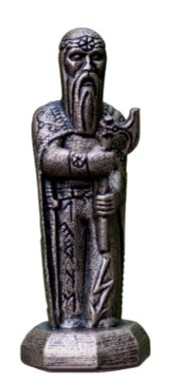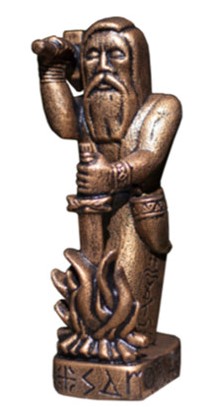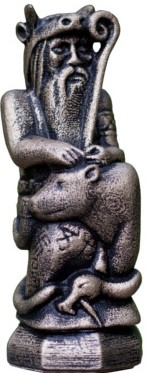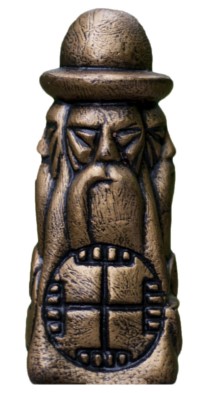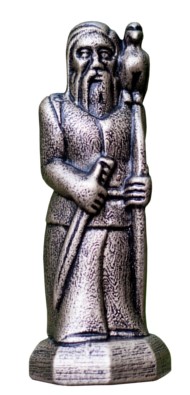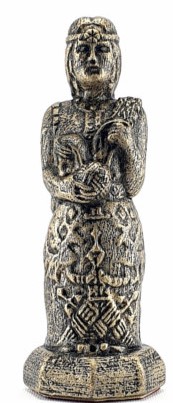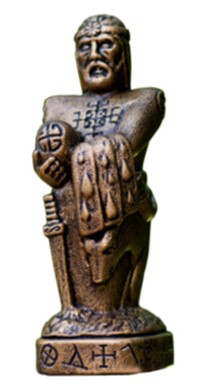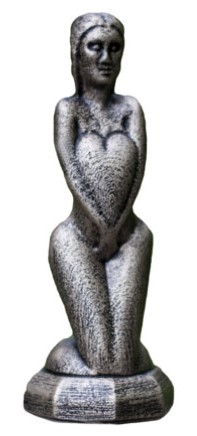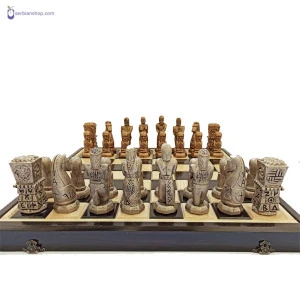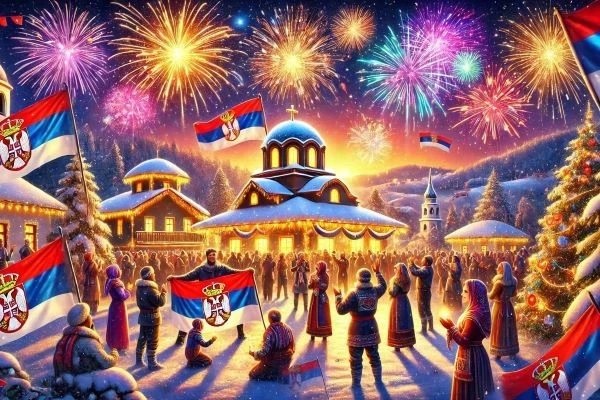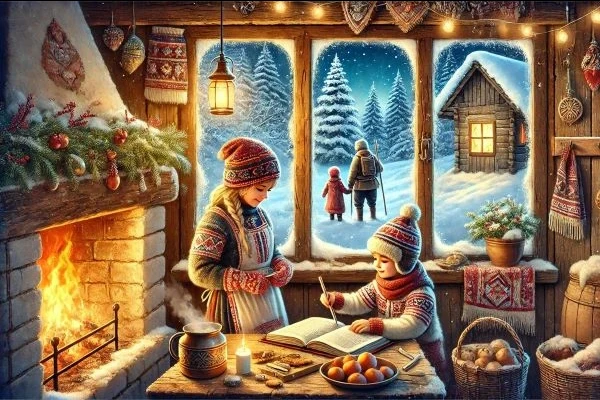DIVINE OF SLAVIC MYTHOLOGY
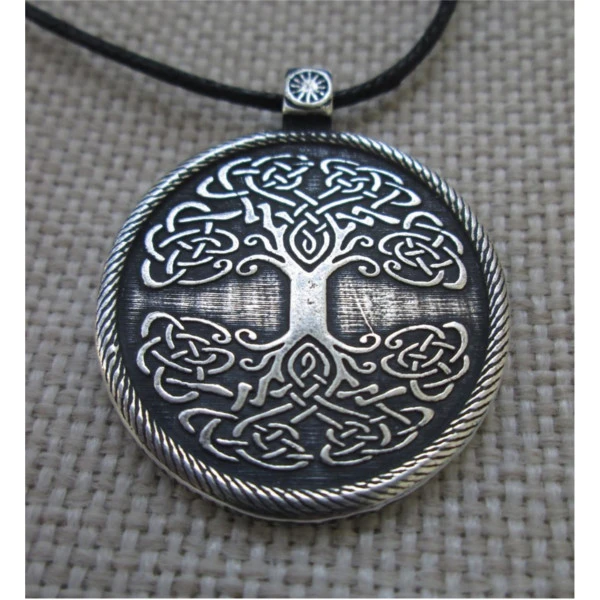
Unlike Greek, Roman or Egyptian mythology, there are no sources of first-hand Slavic mythology, and sources for its research are mostly chronicles written by Christian missionaries and priests, and even more ancient beliefs persisted in folk customs, stories, and songs. The supreme and other deities of Slavic mythology got a special place here. This is how we learned about Perun, Svarog, Daybog and other gods.
Based on the first written trace relating to Slavic mythology, dating from the 6th century in the writings of the Byzantine historian Prokopi, as well as the works of other historians and anthropologists, we can present the most powerful gods of the ancient Slavs.
PERUN
On the basis of the many traces of the name Perun found, it can be assumed that in many Slavic peoples the supreme god was Perun. It is the god of lightning and heaven, the destroyer and destroyer to whom power and influence over natural disasters have been attributed,
Perun, on the other hand, is the protector of justice who punishes the wicked and the disobedient and closes the heavenly door for them. He punishes perpetrators while still alive, and most often uses lightning to execute punishment. It is also related to fire and fire animals (dragon and fire rooster).
Perun is also known as a drought fighter, because thanks to his wife, Dodoli, it had an impact on the rain. After the advent of Christianity, his role was taken by Saint Elijah.
SVAROG
Svarog is a Slavic sun god who gives life warmth as well as a home hearth (which is a replacement for the sun). He was regarded by all Slavs as "full of glory and deity" because he rules the sky that is above and beyond everything.
In his honor, the Slavs ritually placed an oak tree on the hearth because Svarog's time was falling at Christmas Eve. The Svarog statues were made in a sitting position, and in his hands he held two scepter with a sun figure on each.
It is interesting that in the Serbs this god is called Dabog, who is benign during the day, when he carries the sun across the sky, and fearful at night when he leads the sun through the underworld.
VELES
This is an earthly deity, celebrated at the time of sowing and harvesting, the patron saint of cattlemen and growers, but is also known as the god of the underworld living in the roots of trees. He belonged to spiritual powers such as dragons and ales.
At the end of the year, festivities in his honor were held in the winter, and even today, many of the Slavic peoples still have calendar customs. Masked young men go through the countryside, sing songs and tour hosts, and donate the gifts they receive to the god Veles, ensuring happiness and wealth for the year.
There is a story that, in Christianity, Veles was replaced by the archangel Michael, who is celebrated as the patron saint of livestock and livestock, and who can only ward off wolves.
SVETOVID
There are reliable historical data from the ninth century, and the great Serbian holiday of Vidovdan, indicating that Svetovid was the supreme god of the Serbs. In the 19th century, the ruins of a magnificent temple made of wood with a statue of the Universe were discovered.
The Statue of the Universe had four heads, positioned as if the Universe looked on all four sides of the world, that he was a deity who saw everything and knew everything. And Svetovid's feast was celebrated at the time of harvest, and animals were sacrificed in his honor.
By accepting Christianity, the Holy See was replaced by Holy Vid, which is celebrated on June 28 and is known as Vidovdan.
STRIBOG
As we have already pointed out, many Indo-European peoples have ancestors among the ancient Slavs, so some of them created their own special deities. The god Stribog is a deity in Eastern Slavic mythology.
All winds were considered his grandchildren. His cult wooden statue is mentioned among statues that stood on the bank of Kiev, where statues of Perun, Horus and Mokos were found. He is conceived as an old man holding a horn in his hands and with it arouses his grandchildren.
MOKOŠ
Mokosh is also known as the Mother Goddess Goddess, because she was the patron saint of women, women's affairs, family and marriage, and besides the temples, the house was the cult place of this goddess.
It also helps maternity wards, protects their children and helps them maintain a good marriage.
Mokos was also the patron saint of sheep and their fleece. The Slavs believed that she, along with Svarog, was responsible for the creation of humans and was associated with the white bee, the sacred animal of the Slavs.
DAJBOG
Dajbog, and in some peoples and Dabog, Dazbog, Dazdbog, is the Slavic god who gives life to the Earth, because at the same time he is the god of the Sun (solar heat) and rain, which are the most important conditions for the survival of humans. He is at the same time the god of the underworld and the founder of the Slavs (people).
Dajbog is believed to be the “oldest son” of Svarog, which is why he is also called Svarozic. The Daybog or Dabog is assumed to be the tribal god of the Serbs, the god to whom they are most worshiped and from whom they expect protection.
LADA
Here is also one female deity, Lada, the Slovenian goddess of love, beauty and fertility. She is described as a girl with long golden hair, often covered with a wreath of ears.
Rituals were performed in honor of the Lada in connection with the marriage, known as the marches, held on the feast of the Holy Trinity, about which I Vuk Karadzic wrote. And skipping fire is a ritual in honor of the goddess Lada, and is meant to protect against evil forces.
Click here to visit our product category on Slavic Mythology
Related products
Read also
Who was Saint Sava and what was his contribution?
"Saint Sava: A Beloved Serbian Saint with a Rich Legacy and Cultural Significance"
…Serbian New Year: Tradition, Customs and How to Celebrate it
The Serbian New Year, also known as the Orthodox New Year, is celebrated on…
Gifts Inspired by Serbian Culture: Authentic Ideas for the Holidays
The holidays are a time of giving, and finding the perfect gift is often a challenge.…
Traditional Serbian Christmas Customs: How to Cultivate Them in Modern Times?
Christmas is the most joyous holiday in Orthodox Christianity, a time when families…
How to Bring the Spirit of Orthodox Tradition into Your Home This Winter?
Winter is the perfect time to bring warmth, togetherness and the spirit of Orthodox…
Serbian Souvenirs: Perfect New Year's Gifts for All Tastes
New Year is the time of giving, and what is more beautiful than a gift that…
How to stay productive and not waste an entire day on Black Friday shopping
Black Friday is a day full of amazing discounts, but it can easily become exhausting…
Folk Beliefs and Customs for Saint Aranđel - Assembly of Holy Angels
Saint Michael the Archangel, who is celebrated…
Folk Beliefs and Customs for Đurđić - Glory of St. George
Đurđić, the feast of St. George, celebrated on November 16, is one of the most…
Smart shopper's guide: How to make the most of Black Friday
Black Friday is the most famous shopping event of the year that offers huge…
The history of Black Friday: How it all began and why it continues
Black Friday, known as the biggest discount day of the year, today attracts…
Gifts for Children in the Diaspora: How to Nurture the Connection with the Language, Culture and Tradition of Serbia
Children who grow up in the diaspora face specific challenges - they lose contact…

Apply for newsletter
Sign up for the Serbianshop newsletter and get a 10% discount.


